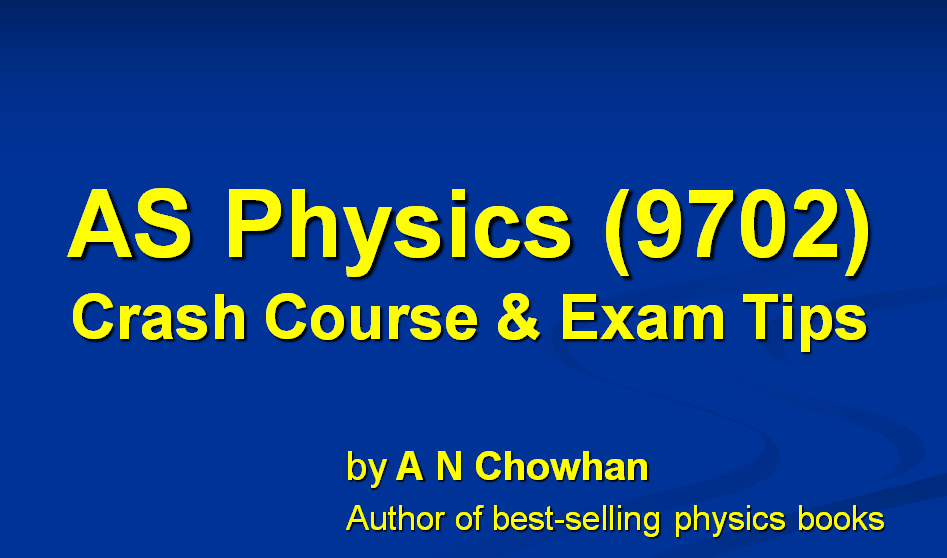Complete Course on AS Physics (9702)

About Course
AS Physics Complete Course
Key concepts discussed in AS Physics (9702) are essential ideas that help students develop a deep understanding of their subject and make links between different aspects. Key concepts may open up new ways of thinking about, understanding or interpreting the important things to be learned.

Good teaching and learning will incorporate and reinforce a subject’s key concepts to help students gain:
- a greater depth as well as breadth of subject knowledge
- confidence, especially in applying knowledge and skills in new situations
- the vocabulary to discuss their subject conceptually and show how different aspects link together
- a level of mastery of their subject to help them enter higher education.
- The key concepts identified below, carefully introduced and developed, will help to underpin the course you will teach. You may identify additional key concepts which will also enrich teaching and learning. The key concepts for Cambridge International AS Physics are:
- Models of physical systems Physics is the science that seeks to understand the behaviour of the Universe. The development of models of physical systems is central to physics. Models simplify, explain and predict how physical systems behave.
- Testing predictions against evidence Physical models are usually based on prior observations, and their predictions are tested to check that they are consistent with the behaviour of the real world. This testing requires evidence, often obtained from experiments.
- Mathematics as a language, and problem-solving tool Mathematics is integral to physics, as it is the language that is used to express physical principles and models. It is also a tool to analyse theoretical models, solve quantitative problems and produce predictions.
- Matter, energy and waves Everything in the Universe comprises matter and/or energy. Waves are a key mechanism for the transfer of energy and are essential to many modern applications of physics.
- Forces and fields The way that matter and energy interact is through forces and fields. The behaviour of the Universe is governed by fundamental forces with different magnitudes that interact over different distances. Physics involves study
of these interactions across distances ranging from the very small (quantum and particle physics) to the very large (astronomy and cosmology).
- Head over to the study material and past papers available for free on Mega Lecture to get the most out of the revision for your next exams. Click Here to Download FREE Past Papers and Notes.
- Please subscribe to our YouTube channel for free video lectures.
Course Content
(1.1) Physical Quantities & Units
-
47:08
-
Physical Quantities and Units
40:39 -
Scalar and Vector Quantities – Vector Addition and Substraction
39:14 -
Questions on Vector Addition and Substraction
40:20 -
Vector Resolution in Perpendicular Components
31:43
(1.2) Physical Quantities and Units – Part 2
Chapter 2: Kinematics
Chapter 3: Dynamics
Chapter 4: Forces, Density, and Pressure
Chapter 5: Work, Energy and Power
Chapter 6: Deformation of Solids
Chapter 7: Electricity
Chapter 8: DC Circuits
Chapter 9: Partical Physics
Chapter 10: Waves
Chapter 11: Superposition
Student Ratings & Reviews

No Review Yet
